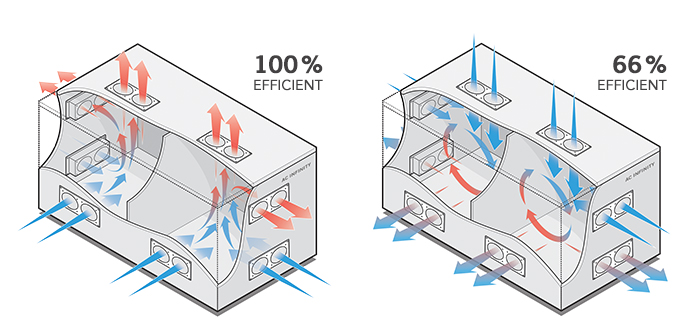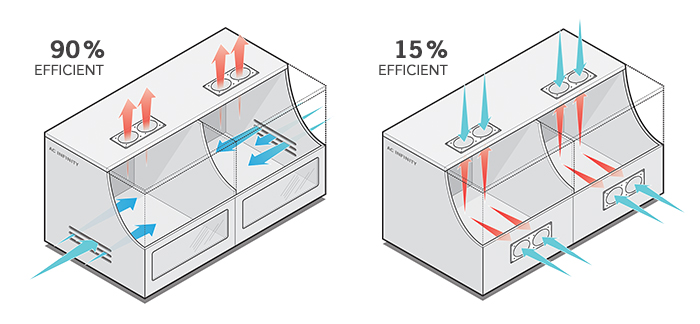Optimal Cabinet Fan Configurations and Positioning

All ventilation fan systems should contain an intake and an exhaust variable, which can be fans or ventilation holes. In an ideal set up, there should be a fan located near the top of the cabinet configured to exhaust out air, and a fan located near the bottom to push in air. Electronics such as receivers and computers within a cabinet will cause air to heat up. Due to natural convection, warmer air which is less dense than colder air will rise on its own. An efficient fan system helps accelerate natural convection by rapidly exhausting warmer air out the top of the cabinet while pushing colder air in at the bottom.

Cabinet fan systems that contain only one fan should have it configured to exhaust hot air out the top of the cabinet. There must be ventilation holes located elsewhere on the cabinet, preferably towards the bottom to act as an air intake. Using fans to push air out will cause negative or lowered pressure within the cabinet. Because air moves naturally from high pressure to low pressure areas, outside air will flow into the cabinet from the ventilation holes. Poorly designed systems include set-ups where there are one or more fans to exhaust air, but no other fans or ventilation holes to act as the air intake.
Optimal Cabinet Fan CFM Recommendations

A fan or set of fan’s CFM rating measures the rate at which air flows into or out of a space. More specifically, the cubic feet of air the fan will displace every minute. The higher this number is, the faster a cabinet will be ventilated. However, it is important to note that factory CFM ratings only holds true for absolute perfect conditions such as zero static pressure and without heat and other externalities.
Real world CFM delivery can vary due to differences in the number and size of electronics inside the cabinet, the amount of heat generated by said devices, the static pressure inside versus outside, and more. After dividing the dimensions of a cabinet by 1728 to get the cubic feet area, we multiply by three to account for all of these real world variables. This gives us a CFM rating we are comfortable recommending and will provide sufficient ventilation for the majority of electronic and component cabinets.



